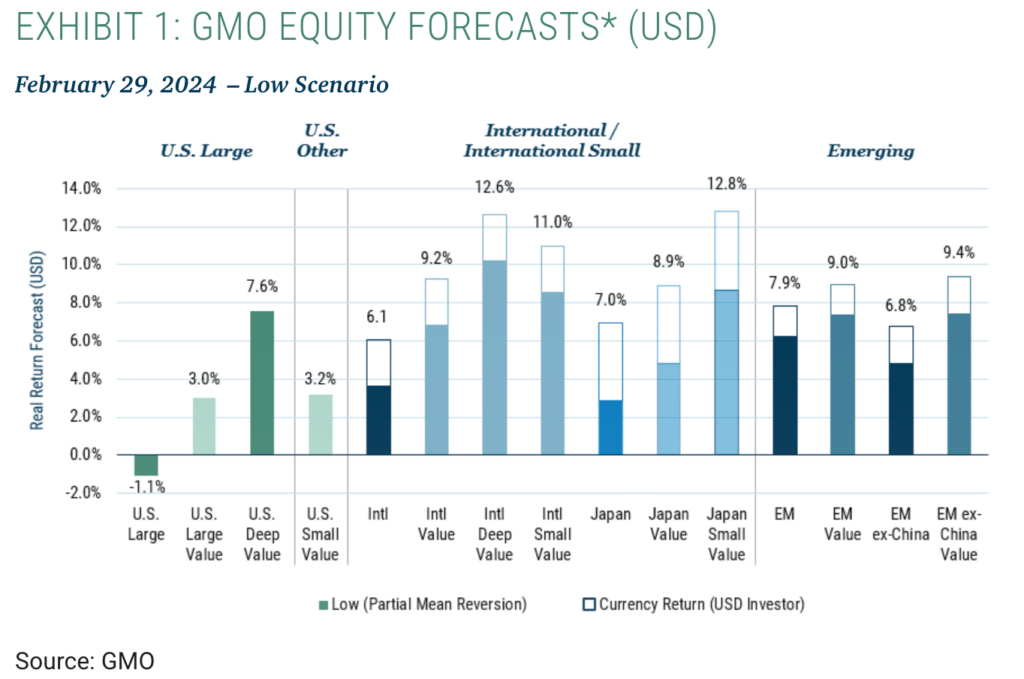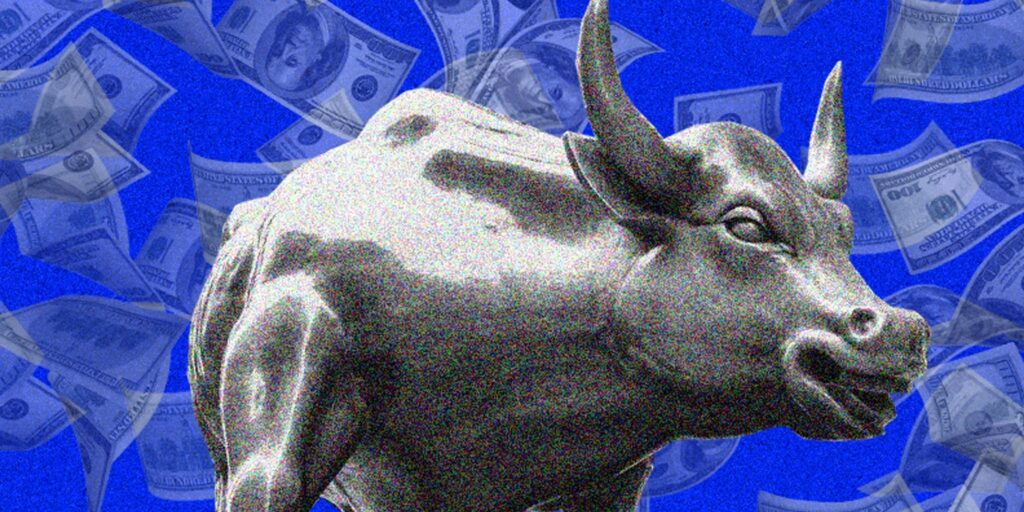- Investors should focus on the cheapest 20% of large-caps, as well as on non-US stocks, GMO wrote.
- These provide the best allocation opportunity in 35 years, the firm said.
- Non-US stocks also benefit from cheap global currencies.
As equities soar to record highs, it's no reason for investors to write off further opportunity. In fact, today's market landscape offers the best allocation options in more than three decades, GMO wrote in a note on Thursday.
"An abundance of cheap assets underpins this enthusiasm from an absolute return standpoint, while appealing valuation spreads within asset classes present us with the best relative asset allocation opportunity we've seen in 35 years," the investing firm said.
First, while US tech has been the dominant theme among large-caps, it's actually the cheapest 20% of this market that stands to gain the most.
Under GMO's low-interest rate outlook, this "deep value" group could provide a 7.6% real return. These stocks are severely dislocated, the firm said, and are trading at discounted rates compared to their historic standards.
In contrast, forward-looking returns on US large equities stand at -1.1%. Meanwhile Large- and small-cap value stocks both offer around 3%.

But while the cheapest large-caps might win out in the US, their returns are outdone internationally, GMO highlighted.
Global deep value equities are forecast to return 12.6%, compared to a 6.1% return among internationals as a whole.
"Not only do non-U.S. stocks benefit from attractive valuations, but they also stand to profit handsomely from cheap currencies," GMO said. "Equity investors can capture the benefit of cheap currencies in two ways: either the currencies can appreciate back toward fair value, or the companies can exploit the competitive advantage of lower relative costs to boost earnings growth."
Stock markets aside, GMO also highlighted attractive prices in bonds, credit, and alternative strategies. In the medium term, a well-mixed portfolio could beat out the typical stock-bond mashup by over 5% annually, the note said.
